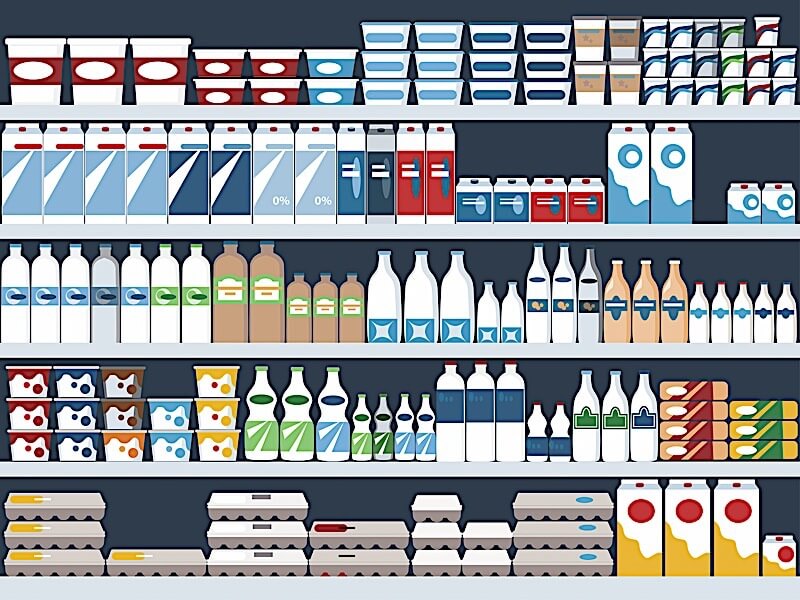Dairy is a destination for daily staples on most shopping trips. But, how are evolving demographics, changing nutritional requirements and the rise of alternative products influencing what winds up in consumers’ baskets?
A recent webinar hosted by NGA explored consumption trends for dairy products as part of a healthy eating pattern, including potential barriers that may be uniquely attributable to race, ethnicity or income level. Tamika Sims, senior director of food technology communications at the International Food Information Council, led the discussion.
This new consumer research from IFIC includes insights into dairy purchase drivers and perceptions on health impacts, with an emphasis on Black and Indigenous People of Color (BIPOC) subpopulations, as well as consumers eligible for Supplemental Nutrition Assistance Program (SNAP) benefits – all important for independent grocers to understand in order to better meet the demands of the unique communities they serve.
Here are some key takeaways from the discussion:
Americans’ diet quality has not improved. Consumers eat too few fruits, vegetables, dairy and whole grains: 44 percent of consumers are not meeting recommendation for calcium, 96 percent are not getting enough vitamin D, 29 percent lack potassium and just 6 percent get enough fiber. The average healthy eating index (HEI) score is 59 out of 100.
Bone and dental health are the benefits most often believed about dairy. When asked if they believe the statement “Dairy is an essential part of a healthy and balanced diet,” 78 percent agree. SNAP-eligible non-Hispanic white people are more likely to believe dairy helps bones. People with children under age 18 are more likely to believe dairy supports heart health.
Fluid milk consumption has lagged while others increased in the past decade. Yogurt, cheese and ice cream lead consumption. Black people are more likely to have increased milk consumption in the last 10 years, while Latinos and non-SNAP-eligible people are more likely to have decreased their milk consumption. SNAP-eligible non-Hispanic white and Black people are more likely to have never consumed lactose-free milk.
Culture or religion neither encouraged nor discouraged dairy consumption for nearly half of Americans, while nearly a third say these aspects of their heritage did encourage consumption.
Taste is the top motivator for milk, yogurt and cheese consumption, followed by being a protein source and being good for bones and teeth. Yet, one in four say they consume milk less than other dairy products because of the taste.
Non-Hispanic white people are less likely to report lactose intolerance or dairy allergy/sensitivity in their household.
Milk reaching its expiration date is a top consumption barrier, followed by limiting intake of saturated fat. Nearly one in four consume milk less than other dairy products because it has a short shelf-life; it does not quench thirst; and it upsets the stomach more than other dairy products.
More than one in three do not cite a definitive reason for not consuming milk and other dairy products more often, suggesting “passive avoidance.” Non-Hispanic whites are more likely to be “passive avoiders” of milk.
Calcium and vitamin D are the most recognized nutritional components in dairy. Nearly six in 10 cite protein as a nutrient you can get from dairy, the same number that say they’re actively trying to include vitamin D in their diet. More than half are actively trying to include calcium in their diets.
What are the most trusted sources of nutrition information? Doctors, along with websites and blogs about health, food and nutrition. Also among the trusted: registered dietitians, nutritionists, fitness professionals and government agencies like FDA and USDA. While friends and family are the most prevalent source of information about the healthfulness of dairy, they are not the most trusted source. Least trusted: third-party consumer organizations, celebrities/influencers and popular media.
Data for this survey was collected online in November 2023 from 3,032 Americans ages 18 years to 80+ years.
For more exclusive insights, view a recording of the complete webinar at https://attendee.gotowebinar.com/recording/7342108081924910424.
[RELATED: NGA Focuses On Fresh For Independent Grocers At Ops Summit]

